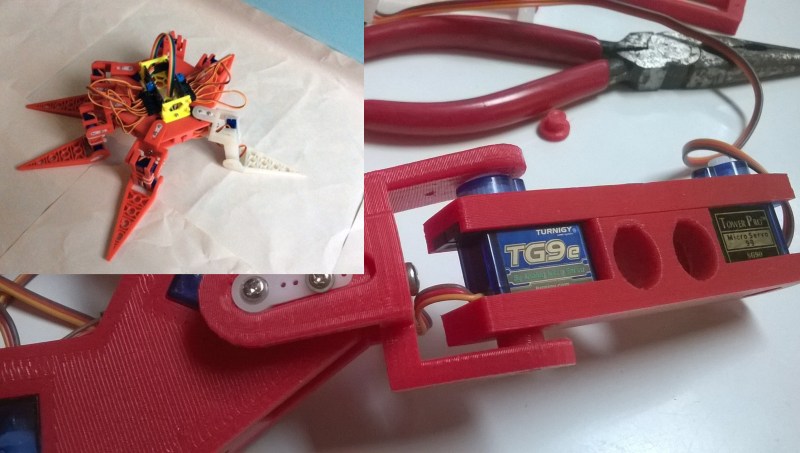[Ken Conrad] didn’t like spiderbot projects he saw on the Internet: they mostly had 2 degrees of freedom per leg—if not fewer. He set out to make a hexapod robot with 18 DOF and the ability to move in any direction. Measuring around 20” from tip to tip, the custom, 3D-printed chassis was designed around eighteen SG90 9g micro servos. Each leg has 3 servos, one to move the tip, one for the middle, and one to move the entire leg back and forth, crab-style.
Perhaps the most intriguing notion of the project are the big paddle-like legs. [Ken] hopes get the robot to achieve some degree of flotation by laying its lower legs flat, staying afloat either due to surface tension, or maybe with the help of some buoyant material added to the legs.
[Ken] still has to figure out a control system for this beast, but we’re in awe of his creative use of zip-ties in place of traditional fasteners.




















Tower pro servos? Really? You can do better than that.
The 9 gram servos sold as tower pro and another brand are less than $1.50 in quantity 10+ so while they are small they are a hackers friend at least for prototyping,
I’m guessing the control system will be the hard part
18-DOF is not difficult as a 6 legged platform is inherently stable — given it has 3 points of contact at all times.
The hard part will be admitting the servos are too underpowered for those legs, as these platforms are usually very fragile even when built correctly.
;)
Someone worked out inverse kinematic animation on 6 leggers years ago. Look up Phoenix robot on YouTube for some idea. We’ve come a long way from running the sim on a laptop and transferring over Bluetooth or WiFi.
Can the tips of the legs be printed hollow to include more buoyancy?
Or for injecting venom?